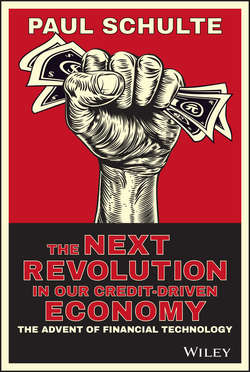The Next Revolution in our Credit-Driven Economy

Реклама. ООО «ЛитРес», ИНН: 7719571260.
Оглавление
Schulte Paul. The Next Revolution in our Credit-Driven Economy
Acknowledgments
About the Author
About the Website
Introduction: A Few Numbers Can Crack the Code
Part One. How Bank Credit Drives Economics (Not the Other Way Around) and Why
Chapter 1. A Few Simple Concepts That Anyone Can Understand
Chapter 2. Differences between Liquidity and Solvency Are Thin
Chapter 3. Anatomy of a Credit Crisis and Examples in the Real World
Part Two. I Am From the Government, and I Am Here to Help Your Broken Banking System
Chapter 4. Socialization of Debt after Mismanagement by Bankers (or, Why Keynesian Economics Doesn't Work)
Chapter 5. Why Capitalist Bankers Create Soviet Banking Models When the Going Gets Rough
Chapter 6. Central Banks Are Carrying the Greatest Load and Will Dominate Outcomes
Chapter 7. How Bankers and Policy Rescuers Affect Stocks, Foreign Exchange, and Property
Part Three. Interlude
Chapter 8. Why Government and Institutions Get Suckered into Debt Binges
Part Four. The Revolution in Financial Architecture
Chapter 9. Why Is This Revolution Happening Now and Why So Fast?
Chapter 10. The Revolution in Alternative Investments
Chapter 11. The Revolution in Big Data and SME Lending in the Emerging World
Chapter 12. Banking and Analytics – The PayPal Gang, Palantir versus Alibaba, and Hundsun
Appendix
Bibliography
Отрывок из книги
The Next Revolution in our Credit-Driven Economy
The Advent of Financial Technology
.....
This book will show that trends in credit have an overwhelmingly powerful effect not only on stock prices but also on asset prices (houses and buildings) as well as the price of currency. In other words, when the credit cycle is on the upswing, the prices of equities, real estate, and currencies tend to appreciate at the same time. They are just as driven by these movements in credit as the moon is driven to rotate around the earth. Economic data pour forth from credit dynamics.
The phenomenon we see today is one where new forms of technologies are being created to allocate capital more efficiently. It is that simple. Banks have shown themselves to be out of touch when it comes to the allocation of capital and the management of risk. So, in a world where the cost of capital is zero, firms are attracted like a magnet to inefficient organizations that cannot change with the times and that mismanage their own core businesses. Furthermore, these institutions are so big that they are arguably incapable of change. Banking is a glaring example, although these titanic changes are occurring in education, retail, and many other industries.
.....